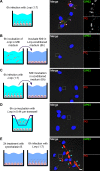The host cell secretory pathway mediates the export of Leishmania virulence factors out of the parasitophorous vacuole
- PMID: 31356625
- PMCID: PMC6687203
- DOI: 10.1371/journal.ppat.1007982
The host cell secretory pathway mediates the export of Leishmania virulence factors out of the parasitophorous vacuole
Abstract
To colonize phagocytes, Leishmania subverts microbicidal processes through components of its surface coat that include lipophosphoglycan and the GP63 metalloprotease. How these virulence glycoconjugates are shed, exit the parasitophorous vacuole (PV), and traffic within host cells is poorly understood. Here, we show that lipophosphoglycan and GP63 are released from the parasite surface following phagocytosis and redistribute to the endoplasmic reticulum (ER) of macrophages. Pharmacological disruption of the trafficking between the ER and the Golgi hindered the exit of these molecules from the PV and dampened the cleavage of host proteins by GP63. Silencing by RNA interference of the soluble N-ethylmaleimide-sensitive-factor attachment protein receptors Sec22b and syntaxin-5, which regulate ER-Golgi trafficking, identified these host proteins as components of the machinery that mediates the spreading of Leishmania effectors within host cells. Our findings unveil a mechanism whereby a vacuolar pathogen takes advantage of the host cell's secretory pathway to promote egress of virulence factors beyond the PV.
Conflict of interest statement
The authors have declared that no competing interests exist.
Figures






References
Publication types
MeSH terms
Substances
Grants and funding
LinkOut - more resources
Full Text Sources
Miscellaneous

